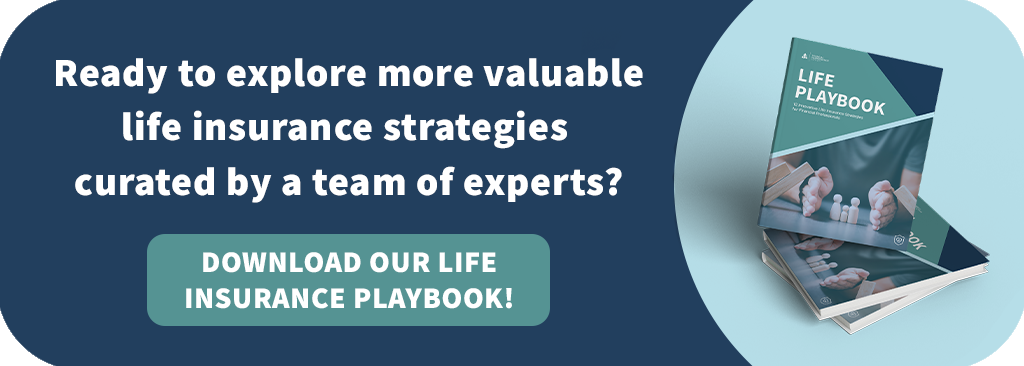Updated August 7, 2024, at 4:02 PM
If you could present an accurate needs analysis in less than a minute, would you sell more life insurance?
I once presented at a Life Office Management Association (LOMA) conference to illustrate how quickly you can get a dynamic look at a client’s life insurance needs using a simple multiple-of-income method.
It can be more accurate than the traditional method that reduces the need by the net worth. Although agents often use a multiple-of-income method, it’s viewed as a crude approach to be used when you don’t have the time to do a full traditional analysis.
A full analysis includes gathering data on assets and liabilities. It takes time and trust to do this fact-finding. Agents should plan to gather this data, but it can be done after first determining the basic need for life insurance protection. The key is to adjust the multiple based on a planned retirement age and to look at the death benefit in excess of cash value.
Life Insurance as TV Shows
The key problem with the traditional method is that it combines an analysis of what happens if death occurs today with a highly uncertain projection of expenses, income, and assets through retirement. It’s better to separate the protection need from the accumulation plan. Before giving examples of how this is done, let me set the stage with some ideas from our TV culture.
Years ago, Kwame Jackson from The Apprentice was the spokesperson for Life Insurance Awareness Month. His message? How life insurance funded his higher education. Will Life Insurance Needs Selling be the next reality TV show? Or, how about these spin-offs?
Survivor
Who will be the first beneficiary to receive seven to ten times income as a life insurance benefit? The Protector or The Accumulator?
Life insurance can fulfill both time slots, but the policy can get out of balance if it tries to be The Protector when it should be The Accumulator. Then the policy becomes You Bet Your Life! It can fall apart before your clients do!
Family Feud
Survey says…
Life insurance surveys show that people average two to three times the income when they need seven to ten times the income. Surveys of retirement needs show that on average, people are far short of what they need to save for retirement. What’s a family to do?
Should they focus on life or retirement needs? Should they buy more life insurance or focus on retirement and take some risk of early death? Maybe prepare for the spouse to live without the other? What if they plan to retire at a later age? Should they lower expectations and live on a tighter budget?
Here are rules of thumb to balance protection and accumulation needs:
1. Use low-cost term or term riders equal to four to eight (or more) times income until five to ten years of retirement when a lower multiple-of-income is needed
2. Use a permanent policy equal to one to two times income. Add more or convert term when able.
3. Take advantage of retirement plans and review other insurance needs.
4. As term costs rise five to ten years from retirement, redirect dollars to permanent life and retirement plans.
5. Build accumulation and annuity income for longer life expectancy.
This strategy provides more protection up to about age 60. It’s fine to reduce protection near retirement in order to make a transition to accumulation needs. Early death near retirement is still a tragedy, but at least the surviving spouse has use of retirement assets. Special circumstances may exist due to pension income or other benefits lost at death. Or the client may have a longer need for income protection due to a choice of retiring at an older age.
Life Insurance Case Study
Here’s a case study for George and Mary Bailey. George is age 45, makes $60,000 a year, and plans to retire in 20 years. Divide those 20 years by two to get a multiple of ten times the income.
Note: This multiple is based on replacing 50% of income with interest offsetting inflation and the income need being net of Social Security. You could divide by 3 if interest beats inflation by 3% or use a calculator to be more exact. A calculator could also give you the option of estimating the Social Security value and using a gross income need.
Ten times the income is a total of $600,000 in insurance. This could be covered with a permanent plan of $120,000, 10-year term of $240,000, and 15-year term of $240,000. Level term switching to a decreasing term would be an ideal fit for the need, but level term is the typical, competitive product. This multiple-of-income approach is fast and easy to do.
The keys to making it dynamic:
- Look at years to retirement to set multiple
- Look at death benefit in excess of cash value
It’s not the A. L. Williams approach that says asset values eventually offset the need for insurance. Instead, it recognizes value in cash or asset values. Policies near retirement should make a transition toward these values.
Let’s look at George Bailey’s needs at age 60. Suppose he’s making $100,000 a year now and has five years until retirement. Using a multiple of about three times the income results in a $300,000 net need, three scenarios that’ll cover this are:
- $300,000 term benefit
- $360,000 death benefits with $60,000 cash value
- $600,000 death benefits with $300,000 cash value
All have a $300,000 net benefit. Cash value supports long-term benefits. The first scenario can become too costly unless the benefit is eventually decreased. On the other hand, the second can be risky, too.
If it’s one policy, the policy may fall apart in 10-20 years unless the premium is increased, or the benefit trimmed. If it has more than one coverage component, then term components may eventually have to be dropped. The third scenario has enough cash value to be truly permanent and to complete the transition from protection in case of early death to protection for long life.
This look at how needs change near retirement is a good way to build a road map for how the policy mix should be managed. After quickly setting the total need, it’s important to look at existing life insurance to see what the benefits are today, and the projected benefits are at retirement.
The Need to Look at Value
Universal life or term policies with long-term guarantees present the need to look at the value other than cash value. These policies make a transition from providing protection in case of early death to providing a legacy value. A long-term death benefit is provided even if the policy runs out of cash value, but the policy must still be supported by company asset values. An example is a shadow account. Be sure to keep the policy in force and be aware that the policy cost isn’t practical after the guarantee period.
How can this simple approach be more accurate than the traditional approach that uses net worth?
The key is that this simple approach doesn’t mix accumulation needs with protection needs. The traditional method is a good exercise, but it mixes these needs. It assumes the client dies today (an unlikely scenario), and provides a very limited map of life’s potential journey. It takes time and trust to gather asset and liability data. But these should focus on the need for retirement accumulation—not for a death benefit today. The results vary greatly based on assumptions for life expectancy, asset growth, future income, inflation, and Social Security.
For example, this method may show a large need if the client lives a long life. The surviving spouse wants this large benefit if death occurs right away, but the more likely problem is that the couple will live to retirement and fall short of their accumulation needs. The protection need should focus on providing the same financial results that’d occur if the client lives and continues to provide income.
The traditional method decreases the need by net worth and implies the wealthy have a lower need for life insurance, but a high net worth client still has a loss of income at death. The wealthy may choose not to cover this insurance risk, but there’s no such thing as self-insurance. In addition, a high net worth client may use life insurance for tax-advantaged accumulation and estate goals.
The multiple-of-income approach allows you to quickly find the net insurance need with a map from today to retirement. The next steps are to:
- Look at existing insurance coverage and the projected benefits at retirement
- Gather net worth data to find the money, reposition assets, and plan for retirement and estate needs
Final Thoughts
My personal experience with these concepts is when my father passed way in 1991 at age 61. He had a balanced plan of life and health insurance, retirement funds, and pension income. He was neither poor nor wealthy. He had enough insurance for the needs of my mother, balanced for their budget and circumstances.
At his death, we put 25% of her money into a life annuity. Then the balance was focused on growth stocks. By 1999 (age 70), her advisor moved to conservative funds appropriate for her life stage. She was fortunate to miss most of the downturn in the stock market. With a solid financial plan, I could then focus on working with my mother to set up her ongoing lifestyle. Putting together family memorabilia was very important for her.
As we present the need for insurance, we can provide a simple road map for life’s journey. We can show a path of income protection in case of early death to accumulation for retirement (protection from outliving assets).
Perhaps we should form alliances with employment and education businesses that help clients build income, and with people who help put together memorabilia and personal legacies.
Our task is to provide peace of mind about the future and legacies to pass on to loved ones.


